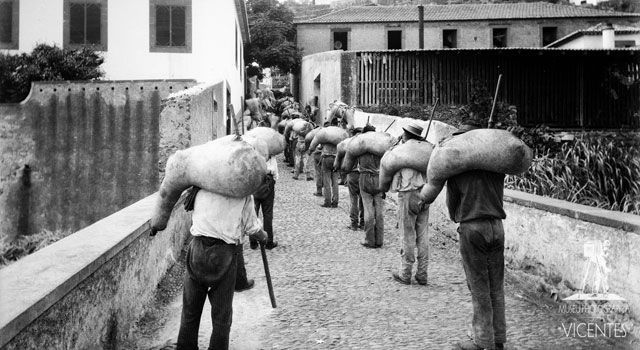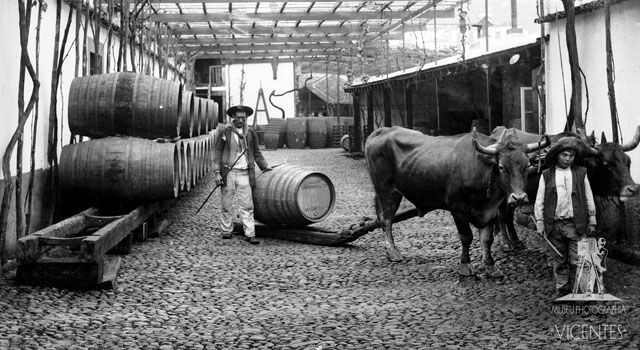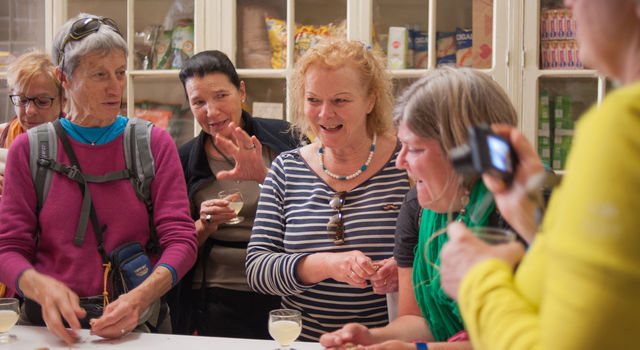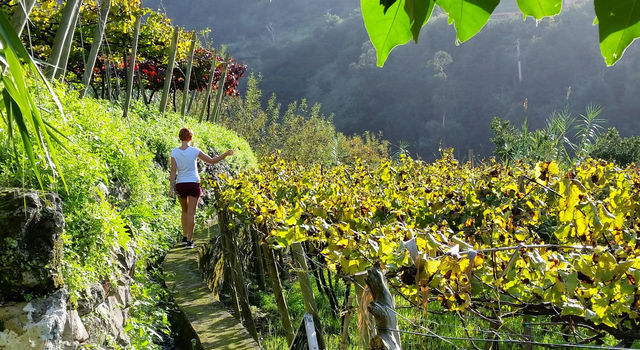The making of Madeira Wine
Many skilled hands go into making the exquisite Madeira Wine. Though nowadays most of the actual production process is done by machines (the pressing and the bottling), there are still some jobs that due to the nature of the island and the sensitivity of the process, have to be done lovingly by hand.
The pruning of the vines in February/March is done painstakingly by the dedicated growers to ensure the plant is ready to sprout its new growth. It's a hard job because the vineyards are up on high steep terraces and the vines are trained to grow in the 'latada' way, which is up a pole and then allowed to spread out horizontally on a network of wires, making this the island of pergolas.
The same goes for the picking of the grapes at 'vindima' (harvest time). No tractor can climb these impressive terraces and crane its neck to get to the highest and sunniest bunches. It is a time of celebration, when families and neighbours come together to help each other pick each other's grapes. Due to the different micro-climates on Madeira Island the 'vindima' lasts almost two and a half months. So it is a long and laborious and loving celebration.
Modern facilities can crush the grapes that have been brought from all over the island mechanically but still the preferred method is crushing them in the 'lagar' (the wine press) by joyfully dancing to traditional songs and feeling the juice that will make the heavenly wine squelch in between your toes. It is an unforgettable and satisfying experience and if you are in Madeira between the end of August and the middle of October, don't hesitate to join in the fun.
Before the building of roads it was counterproductive to carry the baskets of grapes when you had to walk with it on your shoulders for days before you got to the producer who would make the wine. It was more practical to crush the grapes in the local 'lagar' and then carry goat skins filled with the grape must down the beautiful mountain sides. The men whose job it was to do this were called 'borracheiros', and as you can imagine they sometimes needed some sustenance on these treks that could be 20km long: so they lightened their load and lifted their spirits by drinking some of the must. Even today, when you are tipsy in Madeira we say you are a little 'borracho'.
After the wine is pressed and filtered it is put into handsome old oak casks for the unique and lengthy fermentation process to begin. So we could not talk about Madeira Wine without mentioning the 'tanoeiros' (tanners). There are very few tanners still in activity, only rarely making new casks and mainly repairing the sometimes centuries beautiful old casks, for the wine cellars transfer wine from hotter to cooler rooms via hoses which connect the existing casks on each floor.
Wine cellars employ oenologists to test their wines, blend them and make decisions about how long a wine should be left developing in the cask. The reason why these charming wine cellars smell so good is because the wine needs air to ferment, so the casks are never empty and the volume of the wine is constantly evaporating, so angels do get their share!
Wine Tour Review
"We really enjoyed the wine and food tour with our congenial and informative guide. He told us a lot about Madeiran customs as we sampled a wide variety of local food and drink."
JC u “A great morning!”, 26th February 2016 - 5 star rating: Highly Recommended 







